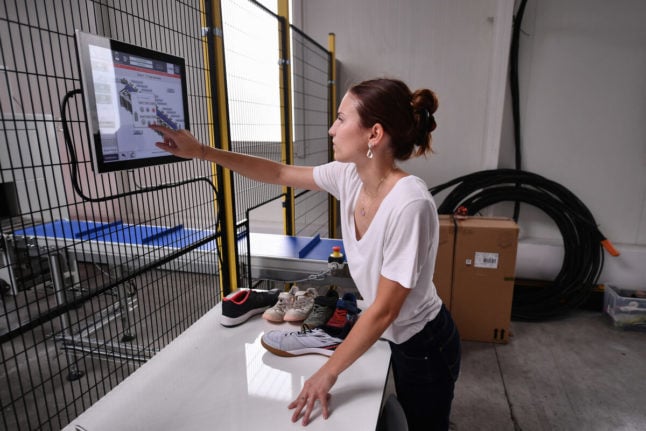The vast waste and pollution caused by the fashion industry has made recycling clothes a top priority, but only now are simple tasks like pulling the sole off a shoe being done by machines.
CETIA, a company in the Hendaye, in the Pyrénées-Atlantiques, is finally offering some mechanical solutions to the challenges of recycling clothes.
Its research team has developed a machine that uses artificial intelligence to scan garments, identify hard elements like zips and buttons, and use a
laser to cut them out.
It has also built a machine that grabs shoes in a large mechanical arm and yanks off the soles.
In a world of space travel and vaccines, that may seem a relatively rudimentary piece of technology, but it had simply never been done before.
“It was a chicken-and-egg question. No one was recycling soles because we couldn’t separate them from the shoe, and no one was separating them because there was no recycling,” said company director Chloe Salmon Legagneur.
Previously, recyclers had to bake the shoes for many hours to melt the glue and then pull the sole off by hand.
“There’s nothing spectacular in what we’ve done,” Legagneur said. “But we’ve done it.”
Currently, barely one percent of textiles in Europe are turned back into new clothes. Most end up as housing insulation, padding or asphalt for paving roads.
That is because clothes are usually a complex mix of materials that must be separated carefully to keep the fibres in good condition if there is any hope
of respinning them into new garments.
Usually done by hand, CETIA says its AI-laser machine can do this at a much faster rate that is rapidly evolving as it perfects the technology.
It also has machines that can sort clothes by colour and composition at a rate of one per second.
EU rules
The reason these inventions are finally emerging is that tough new European rules are imminent that will force clothing companies to use a set amount of
recycled fibres in their garments.
CETIA’s work is backed by big retailers like Decathlon and Zalando who are urgently looking for industrial-scale solutions.
There are also political incentives. The French government sees the potential for new manufacturing jobs if recycling technology allows it to deal with some of the 200,000 tonnes of textile waste currently being shipped abroad each year.
CETIA’s focus is on preparing textiles for reuse. Other companies must now start melting down separated soles and turning them into new ones.
But it is an important first step.
“As long as we do not have systems to prepare materials for recycling, we will not have a recycling sector in France,” said Veronique Allaire-Spitzer,
of Refashion, which coordinates waste management.
It injected €900,000 into CETIA with a similar contribution from the regional government.
“None of this is a magic idea. It’s just common sense,” said Legagneur. “But it’s about putting together the engineers and the financing and the companies who need these solutions, and it’s only now that these things are coming together. Ten years ago, no one wanted it.”



 Please whitelist us to continue reading.
Please whitelist us to continue reading.
Member comments